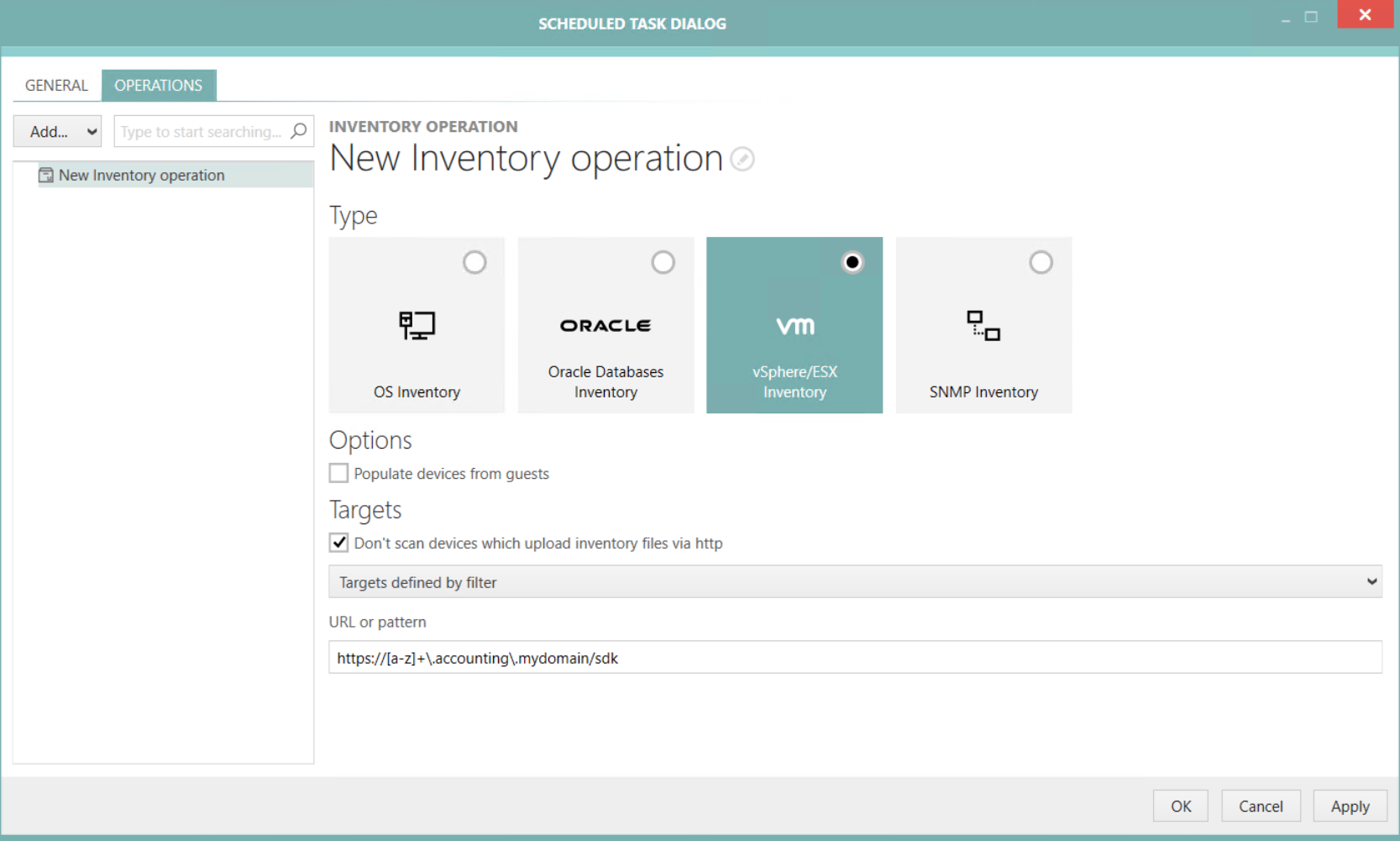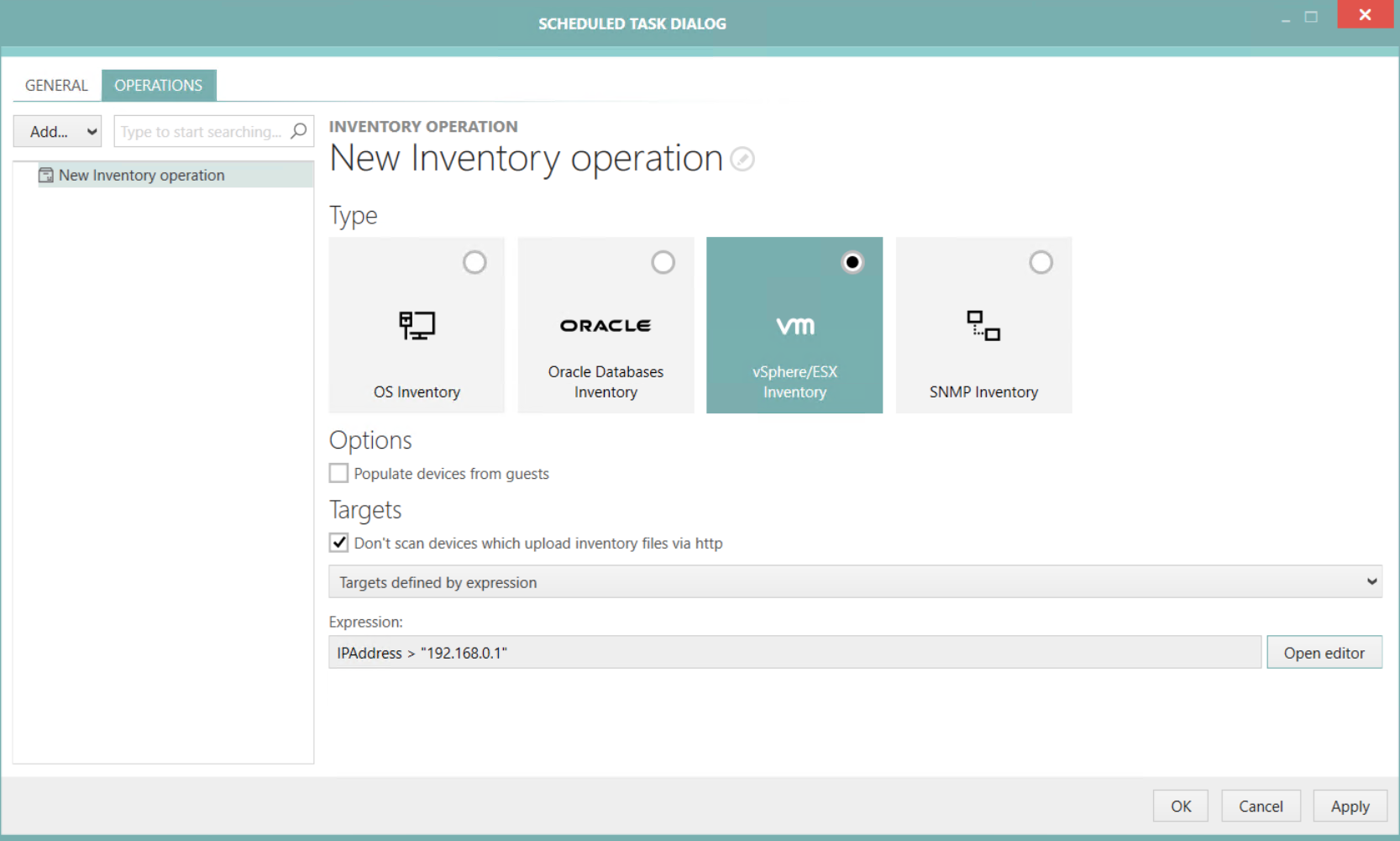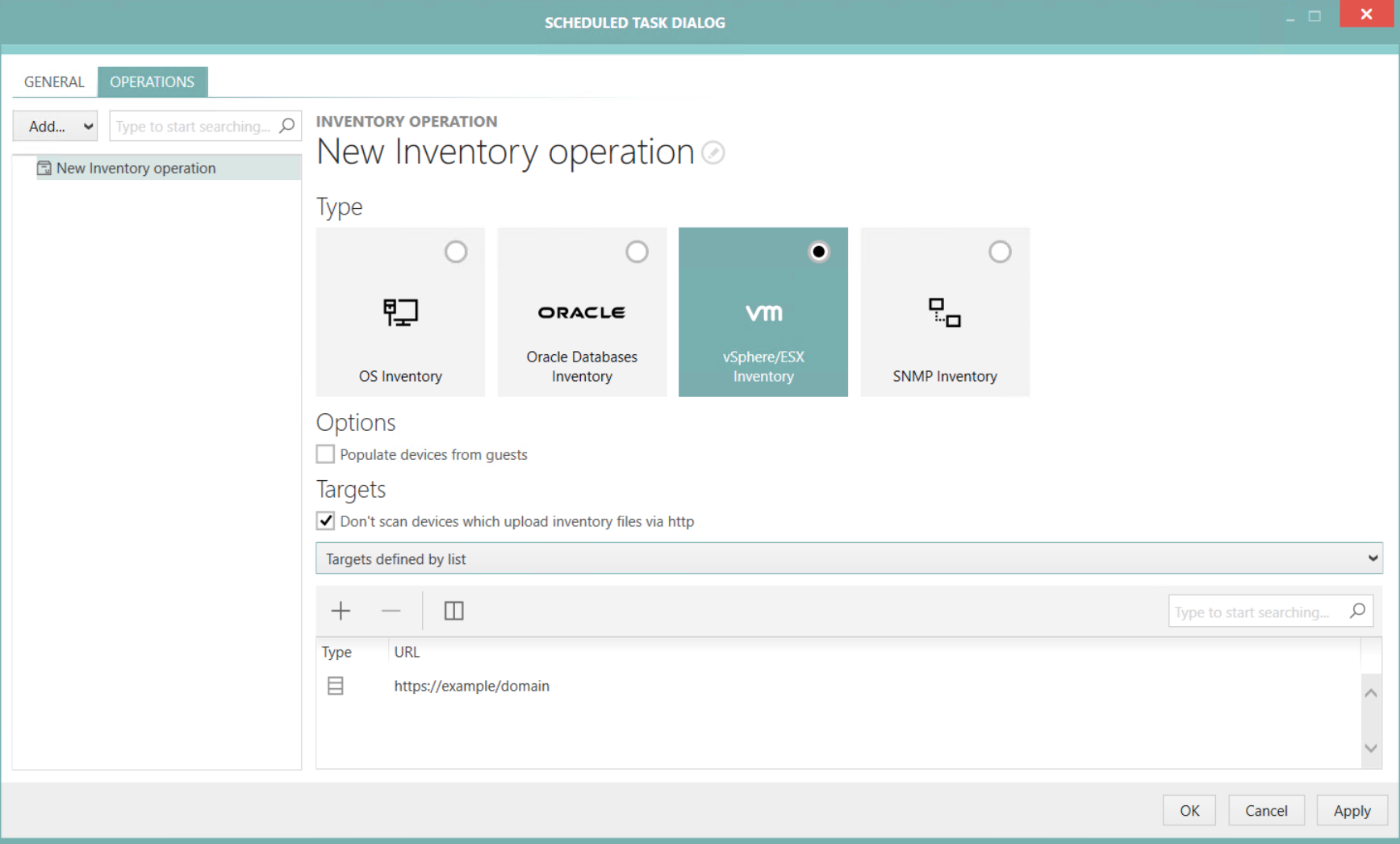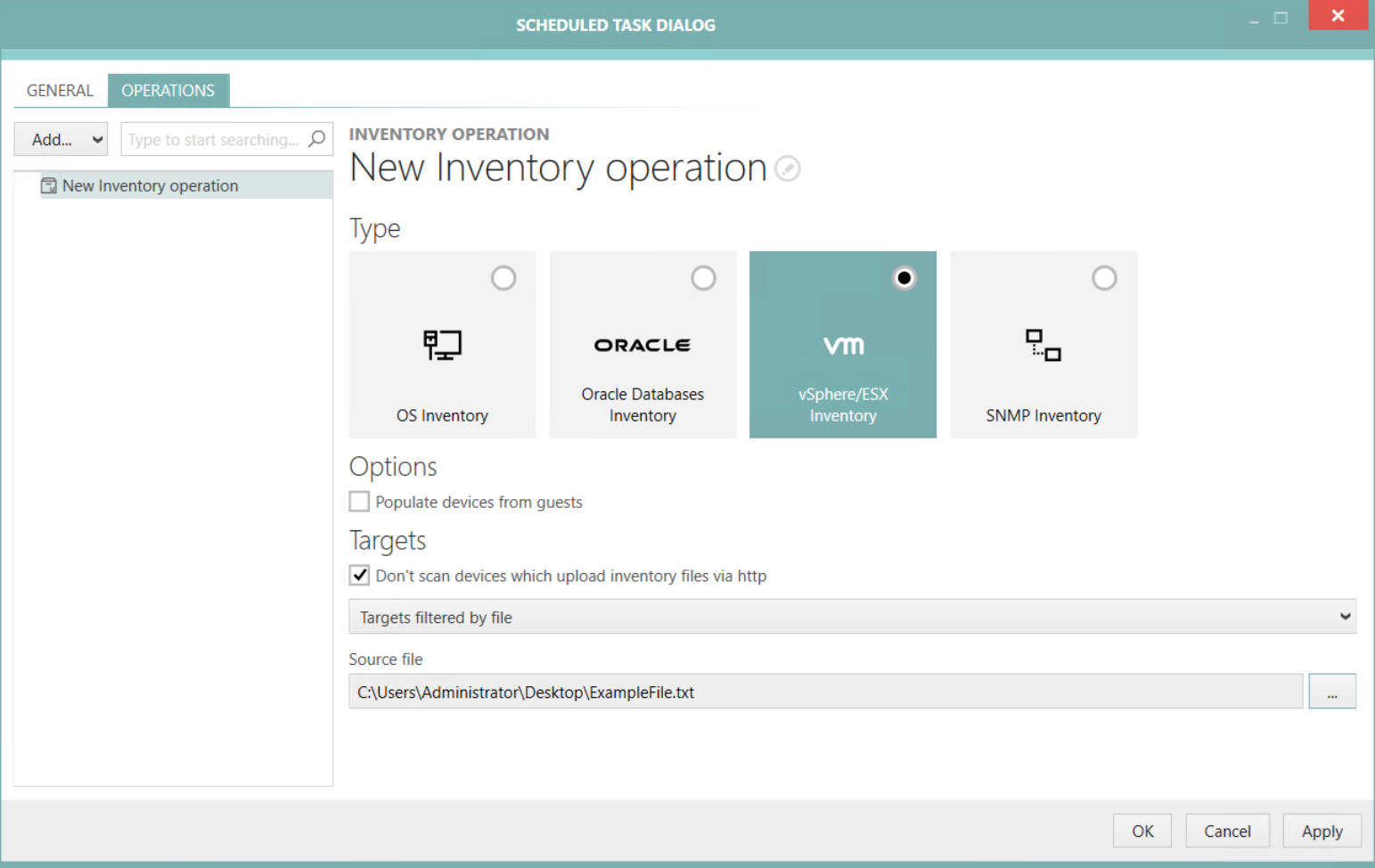A vSphere/ESX inventory is performed by the vSphere/ESX action. The target host for this operation is defined by one of the following options that can be configured using the dropdown menu underneath the Don't scan devices which upload inventory files via http checkbox:
•Targets defined by expression
Additionally, there is also the option to populate the devices from guests. This option can be activated by selecting the Populate devices from guests checkbox.
Targets Defined by Filter

For the Targets defined by filter option, the following settings are available:
•URL or pattern: This field contains a URL or a regular expression. Information about how to use regular expression refer to the Microsoft Documentation.
Example:
[a-z]+\.sitea\.mydomain
•[a-z]: all lowercase letters from "a" to "z".
•+: the preceding element can be matched one or more times.
•\.: matches a "."
Therefore this regular expression can be used to filter for everything that starts with letters only and ends with ".sitea.mydomain".
Targets Defined by Expression

For the Targets defined by expression option, the following settings are available:
•Expression: Enter the expression that is used as filter into this field. The expression can be created by using the Advanced Filtering editor. To use the editor, click on the Open editor button located behind the Expression field.
Targets Defined by List

The Targets defined by list option allows to pick one or multiple hosts from the ESX/vSphere list. In order to add a new host, click on the + button located at the top of the list. Hosts can be removed by selecting on host and clicking on the - button.
Targets Filtered by File

For the Targets defined by file option, the following settings are available:
•Source file: Select a file containing the URLs by clicking on the Browse [...] button and selecting the target file (either .txt or .csv).
A simple text file is sufficient as source file. The values need to be separated by either a semicolon or a (NewLineCharacter). The following examples are valid entries for the file:
Example 1:
https://192.168.170.1/sdk;https://192.168.170.2/sdk
Example 2:
https://192.168.170.1/sdk
https://192.168.170.2/sdk